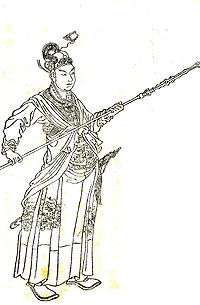Commitment device

A commitment device is, according to journalist Stephen J. Dubner and economist Steven Levitt, "a means with which to lock yourself into a course of action that you might not otherwise choose but that produces a desired result".[1] In other words, a commitment device is a "way to change one's own incentives to make an otherwise empty promise credible".[2]
A commitment device is a technique where someone makes it easier for themselves to avoid akrasia (acting against one's better judgment), particularly procrastination.
Overview

The term "commitment device" is used in both economics and game theory. In particular, the concept is relevant to the fields of economics and especially the study of decision making (Brocas, et al.).
A common example comes from mythology: Odysseus' plan to survive hearing the sirens' song without jumping overboard. Economist Jodi Beggs writes "Commitment devices are a way to overcome the discrepancy between an individual's short-term and long-term preferences; in other words, they are a way for self-aware people to modify their incentives or set of possible choices in order to overcome impatience or other irrational behavior. You know the story of Ulysses tying himself to the mast so that he couldn't be lured in by the song of the Sirens? You can think of that as the quintessential commitment device" (Beggs 2009).
Behavioral economist Daniel Goldstein describes how commitment devices established in "cold states" help an agent guard against impulsive decisions in later, emotional, stimulated, "hot states". Goldstein says that, despite their usefulness, commitment devices nevertheless have drawbacks. Namely, they still rely on some self-control.[3] Goldstein says that, for one, a commitment device can promote learned helplessness in the agent. If the agent enters a situation where the device does not incentivize commitment, the agent may lack sufficient will or ability to control themselves. (Goldstein uses the example of a cake falling into the grey area of a diet, so it is eaten excessively.) Second, commitment devices can usually be reversed. (An unplugged distracting electronic can be plugged back in.) [3]
Goldstein says "In effect you are like Odysseus and the first mate in one person. You're binding yourself, and then you're weasling your way out of it, and then you're beating yourself up for it afterwards."[3]
Methods
- Create larger obstacles to temptations to increase the costs of temptations.
- Make it well known of your commitment, thus putting your reputation on the line.
- Make a monetary contract with someone to increase the benefit of staying on course.
Other examples

Examples of commitment devices abound. Dubner and Levitt give the example of Han Xin, a general in Ancient China, who positioned his soldiers with their backs to a river, making it impossible for them to flee, thereby leaving them no choice but to attack the enemy head-on. They also present various commitment devices related to weight loss (2007). In addition, some game theorists have argued that human emotions and sense of honor are forms of commitment device (Arslan 2011 & Ross and Dumouchel 2004). Other examples include announcing commitments publicly and mutually assured destruction (Straker 2011), as well as software programs that block internet access for a predetermined period of time.
See also
References
- ↑ Dubner and Levitt, Stephen J. and Steven D. "The Stomach-Surgery Conundrum," New York Times, November 18, 2007.
- ↑ Reeves, Daniel. "How To Do What You Want: Akrasia and Self-Binding," Messy Matters, November 15, 2010.
- 1 2 3 TED talk - Daniel Goldstein on the battle between your present and future self, http://www.ted.com/talks/daniel_goldstein_the_battle_between_your_present_and_future_self
Further reading
- Arslan, Ruben. "Evolution of cooperation: Emotion as a commitment device," Evolutionary Theory across the Life Sciences, 2000-2011.
- Beggs, Jodi. "Be Careful With Those Commitment Devices…," June 17, 2009.
- Brocas et al., Isabelle, Juan D. Carrillo, and Mathias Dewatripont. "Commitment Devices under Self-Control Problems: An Overview,"
- Ross and Dumouchel, Don and Paul. "Emotions as Strategic Signals," Rationality and Society August 2004 vol. 16 no. 3 251-286.
- Straker, Dave. "Commitment Devices," Changing Minds, 2002-2011.